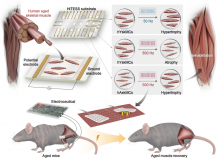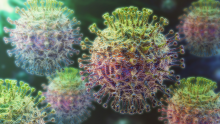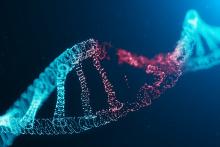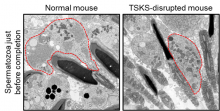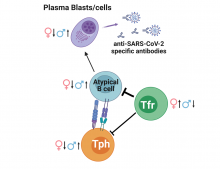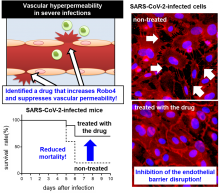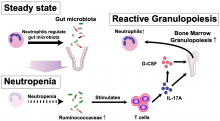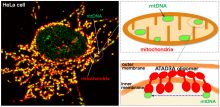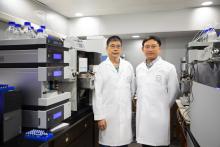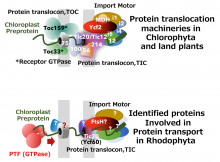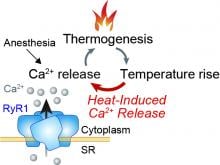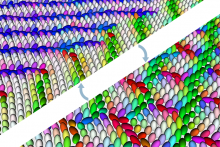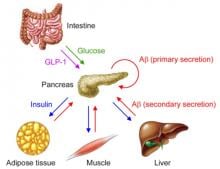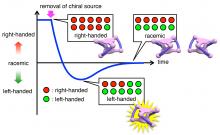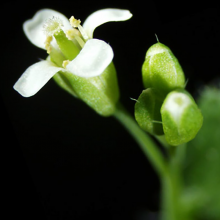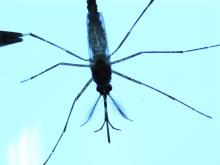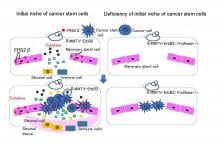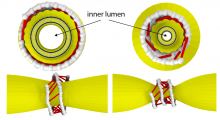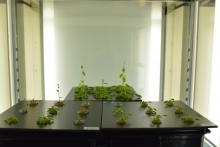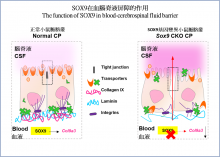Proceedings of the National Academy of Sciences (PNAS)
News
16 Jan 2024
Researchers from Osaka University have discovered a novel treatment to relieve cytokine release syndrome (CRS), a life-threatening inflammation triggered by a serious infection or severe burn. Treatment with a short-acting antibody reduces the inflammatory effects of interleukin-6, a key cytokine in CRS while avoiding the side effects associated with previous longer-acting therapies.
15 Sep 2023
This novel technology:
- provides potential treatment in relation to restoring aging muscle cells obtained from older adults and remedying sarcopenia in aging animals through bioelectric medicine
- presents a new paradigm for treating sarcopenia, for which no drugs are currently available to treat this condition
- has been reported in the internationally renowned academic journal, Proceedings of the National Academy of Sciences (PNAS)
08 Sep 2023
Study addresses gaps in understanding of swine influenza A virus evolution and highlights need for early warning of disease emergence
24 Aug 2023
DNA and RNA, the two main types of nucleic acid and the building blocks of life, are susceptible to environmental stimuli, which can cause them to deform, bend or twist. These deformations can significantly affect gene regulation and protein functions, but they are extremely difficult to measure using traditional techniques. Recently, a research team co-led by a physicist from City University of Hong Kong (CityU) accurately measured the change in a nucleic acid induced by salt, temperature change and stretching force. Their findings help reveal the underlying universal deformation mechanisms of DNA and RNA.
29 Jun 2023
The brain is a highly efficient, sophisticated information processing system. To achieve maximum efficiency, it can store reservoirs of interconnected nodes that transform input signals into a more complex representation. This has inspired a theoretical computational model known as reservoir computing. A research team has recently harnessed this model to analyze the computational capabilities of an artificially cultured brain composed of neurons derived from the cerebral cortex of rats.
15 May 2023
Researchers at Kanazawa University report in the Proceedings of the National Academy of Sciences of the United States of America (PNAS) high-speed atomic force microscopy experiments that show how ligands associated with stimulating and suppressing activation of the TRPV1 protein increase and decrease the molecule’s structural variations. The observations provide insights into how these heat- and chilli-sensing proteins function.
28 Mar 2023
A group including Osaka Metropolitan University researchers discovered that the rhodopsin—a protein in the eye that detects light—of whale sharks has changed to efficiently detect blue light, which penetrates deep-sea water easily. The amino acid substitutions–one of which is counterintuitively associated with congenital stationary night blindness in humans—aid in detecting the low levels of light in the deep-sea. Although these changes make the whale shark rhodopsin less thermally stable the deep-sea temperature, allows their rhodopsin to keep working. This suggests that the unique adaptation evolved to function in the low-light low-temperature environment where whale sharks live.
13 Mar 2023
Researchers from Osaka University identified the role of a protein known as testis-specific kinase substrate (TSKS) in the process of spermiation, the release of mature sperm. Analysis of a gene-modified mouse model in which TSKS is disrupted revealed that TSKS is necessary for sperm to eliminate cytoplasm and become streamlined. These findings may lead to the development of diagnostic tests and male contraceptives.
13 Feb 2023
Researchers from Osaka University have shown sex-specific differences in the immune response to COVID-19 infection. By identifying and analyzing the immune cell population in COVID-19 patients, they showed that infection results in a reduced ratio of circulating follicular T regulatory (cTfr) cells to a network of antibody-producing proteins, correlated with dysregulated antibody production. This cTfr cell reduction is more significant in males, providing cellular evidence for the observed association between increased risk and male sex.
10 Feb 2023
Osaka Metropolitan University scientists have demonstrated that fish can recognize “it’s me” when they themselves in a picture for the first time in non-human animals. Further testing made it clear that the fish recognize their own face in the pictures like humans.
13 Jan 2023
Researchers led by Osaka University demonstrated the role of endothelial cell-specific protein Roundabout4 (Robo4) in the reduction of vascular permeability and mortality in mouse models of severe infection. The research team identified a drug inhibitor that increased Robo4 expression and reduced mortality in sepsis and SARS-CoV-2 mouse models of infection. These findings may aid in the development of drugs to reduce the mortality rate of severe infectious diseases.
28 Nov 2022
The Sox9 gene is upregulated in the absence of sex-determining Y chromosome and Sry gene in Amami spiny rat.
25 Nov 2022
A research group at the Osaka Metropolitan University Graduate School of Science has revealed a new system that allows them to control the behavior of the nematode worm Caenorhabditis elegans, using two different animal opsins, a type of light-sensitive protein. The first opsin was expressed in the worms’ sensory cells responsible for triggering avoidance behavior, making the worms move. This opsin was found to be approximately 7,000 times more sensitive to white light than the commonly used optogenetic protein channelrhodopsin-2. Likewise, a UV-sensitive opsin was expressed in the worms’ motor neurons, causing the worms to stop when exposed to UV light and start moving again when exposed to green light. Both opsins tested can be switched on and off repeatedly without breaking down, making them robust tools for future research, including the field of drug discovery.
21 Nov 2022
Intestinal bacteria composition is crucial to driving the recovery of neutrophils counts in the blood of mice following treatments such as stem cell transplants or chemotherapy.
17 Nov 2022
Researchers led by Osaka University have shown that a molecule known as ATAD3A is essential for the movement of genetic material inside cellular substructures called mitochondria. Appropriate distribution of this DNA, organized into “nucleoid” structures, is key for the generation of energy by the “respiratory chain” protein complex. This study opens up opportunities for developing new methods to alter nucleoid movement and affect mitochondrial function, thereby providing potential therapies against mitochondrial diseases.

24 Oct 2022
Investigations in Japan have uncovered some molecular mechanisms behind mitochondrial dysfunction in chronic heart failure.
10 Oct 2022
A study led by Hong Kong Baptist University (HKBU) has revealed the association between rapidly fading antibody levels in some recovered COVID-19 patients and a high plasma concentration of a metabolite called glycylproline (gly-pro) and its producing enzyme.
27 Sep 2022
Scientists have pinpointed a protein in lysosomes that is involved in recycling a crucial fatty component of cell membranes to keep cells healthy.
18 Aug 2022
A research group led by Osaka University has found a new class of proteins in the red algae Cyanidioschyzon merolae that are involved in moving proteins across the membranes of chloroplasts – subcompartments that conduct photosynthesis within the cells of organisms such as plants and algae. These findings could be used to boost photosynthesis in several groups of algae that contribute considerably to marine biomass and are commercially farmed.
01 Aug 2022
A team of researchers led by Osaka University has found that mutations in the calcium channel protein RyR1 that confer susceptibility to malignant hyperthermia make the protein hypersensitive to heat, which triggers excessive calcium release from the endoplasmic reticulum. Clarifying the mechanism by which calcium release is accelerated at an elevated temperature in patients with malignant hyperthermia may also provide important insight into how exertional heat stroke occurs under extreme environmental conditions.
30 Mar 2022
A team led by a Institute of Industrial Science, The University of Tokyo researcher has created a model to probe the role of emergent elastic fields in chiral molecular crystals
15 Mar 2022
A research group has revealed that amyloid-β (Aβ) detected in blood is secreted from peripheral tissues (pancreas, adipose tissue, skeletal muscle, liver, etc.) that are sensitive to glucose and insulin. Also, that Aβ secreted from peripheral tissues acts as a regulator on pancreatic β-cells to suppress insulin secretion. The results of this study indicate that blood Aβ levels fluctuate significantly with diet, and special care should be taken when using blood samples as a diagnostic marker for Alzheimer's disease, such as taking blood samples during fasting.
10 Mar 2022
Researchers at Kanazawa University report in Proceedings of the National Academy of Sciences a responsive molecular system that, through chemical reactions, inverses its chirality before becoming racemic.
09 Mar 2022
Scientists from Hokkaido University and colleagues have identified a pathway that accelerates plant flowering in low-nitrogen soils — a finding that could help enhance agricultural production.
21 Jan 2022
Our brain maps out our body to facilitate accurate motor control. For a century, the body map has been thought to have applied to all types of motor actions. Now, a research group has revealed that the body relies on multiple maps based on the choice of motor system.
13 Jan 2022
The dengue virus alters mosquito behaviour in a way that makes it three times more efficient at transmitting infection.
08 Nov 2021
We have clarified at the molecular level the mechanism by which a microenvironment, a so-called niche that surrounds cancer cells, is formed in which stromal cells and immune cells are attracted at an initiation stage of breast cancer onset. A molecule called FRS2β is found to be critical for creating this microenvironment. The present finding is expected to be beneficial in prevention, diagnosis and treatment of cancers at the initiation stage.
02 Sep 2021
Researchers at Kanazawa University report in Proceedings of the National Academy of Sciences how a protein molecular motor can chop off a piece of cell membrane. The constrict-and-cut mechanism resembles that of a ratchet motor, and is of importance in processes mediating the entry of particles into cells.
28 May 2021
Scientists from Japan, Europe and the USA have described a pathway leading to the accelerated flowering of plants in low-nitrogen soils. These findings could eventually lead to increases in agricultural production.
24 Feb 2021
A research team from the School of Life Sciences at The Chinese University of Hong Kong (CUHK) has recently discovered that SOX9 protein is an essential regulatory factor of choroid plexus function that ensures the correct composition of cerebrospinal fluid (CSF). The finding, recently published in the prestigious scientific journal Proceedings of the National Academy of Sciences of the United States of America (PNAS), has provided the scientific community a novel understanding to the molecular regulatory mechanisms behind the function of the blood-CSF barrier and lays the groundwork for developing novel therapeutic strategies for preventing and treating neurodevelopmental disorders.
Events
Sorry, no events coming up for this topic.
Researchers
Sorry, no researchers coming up for this topic.
Giants in history
Sorry, no researchers coming up for this topic.



